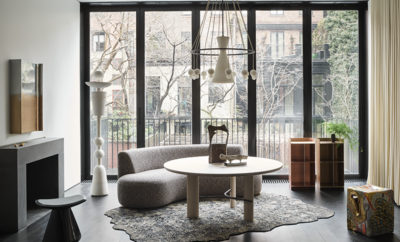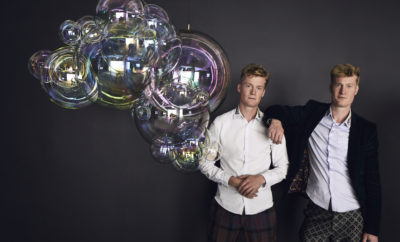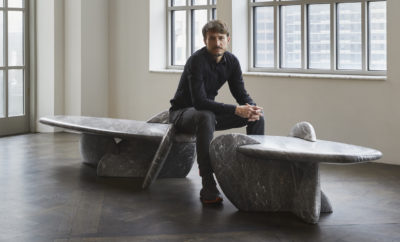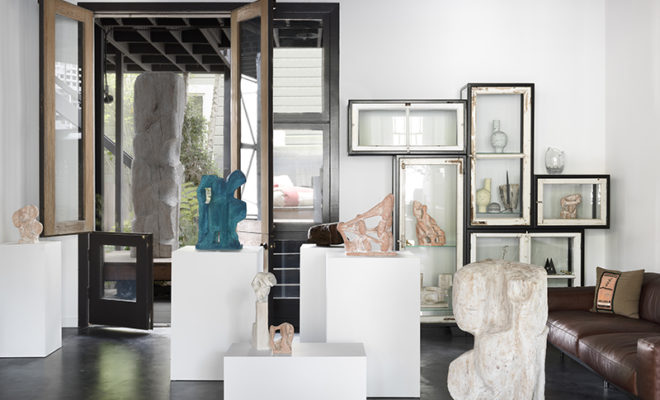 Inside The Future Perfect’s new San Francisco space are assorted sculptures by Ryosuke Yazaki and a cabinet by Piet Hein Eek. BRIAN FERRY PHOTO, COURTESY OF THE FUTURE PERFECT.
Inside The Future Perfect’s new San Francisco space are assorted sculptures by Ryosuke Yazaki and a cabinet by Piet Hein Eek. BRIAN FERRY PHOTO, COURTESY OF THE FUTURE PERFECT.
Design
New Views
A VICTORIAN CITY KNOWN FOR its twenty-first-century innovation, San Francisco offers the perfect backdrop for exhibiting contemporary design in historic spaces. With this in mind, two galleries, Carpenters Workshop Gallery and The Future Perfect, have recently opened up new locations in the Bay Area. Though these showrooms couldn’t be more different, both speak to the city’s history and offer unique perspectives on design display beyond the white box.
CARPENTERS WORKSHOP GALLERY
THE NAME ALONE IMPLIES THAT CARPENTERS Workshop Gallery is comfortable with the unconventional address. Julien Lombrail and Loïc Le Gaillard launched their gallery in 2006 within a former—as you guessed—carpenter’s workshop in London’s Chelsea district. They have since opened locations in the Marais in Paris and in a two-story penthouse in a Philip Johnson–designed skyscraper in Manhattan. However, their San Francisco outpost is their most unusual yet. “We like to exhibit in spaces that are a bit off the beaten path,” says the San Francisco director, Ashlee Harrison. “None of our galleries have storefront space and that is on purpose.”
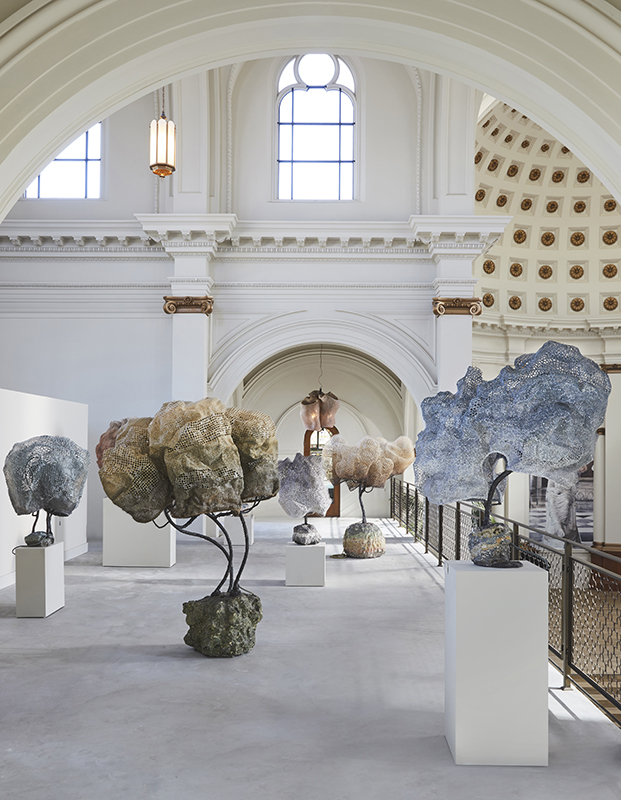
The interior of the new Carpenters Workshop Gallery in San Francisco, featuring floor lamps by Nacho Carbonell. MATT HARRINGTON PHOTO, COURTESY OF CARPENTERS WORKSHOP GALLERY.
You’ll find the newest Carpenters Workshop Gallery on the mezzanine of a former church, a landmark structure built in 1913 and recently renovated by one of the building’s owners, designer Ken Fulk, to become the Saint Joseph’s Arts Society. Since its inaugural exhibition in the nearly 9,000 square-foot space opened last October, which included works by Studio Job, Maarten Baas, and Nacho Carbonell, among others, the gallery has staged a solo show of work by Vincenzo de Cotiis, whose raw, textured designs contrast beautifully with the whitewashed Romanesque interiors. “The classical architecture communicates a sense of drama that a more traditional white box exhibition space cannot offer,” Harrison says. “The space can work well to complement some pieces while also providing a stark aesthetic juxtaposition to others that can be just as provocative.”
Working within a landmark building does come with challenges. “We have to take into mind the historic integrity in exhibition planning,” Harrison says. “Also, our gallery resides on a mezzanine level, so there are certainly logistical preparations when installing large scale pieces. But all of this pushes the creativity of the process!”
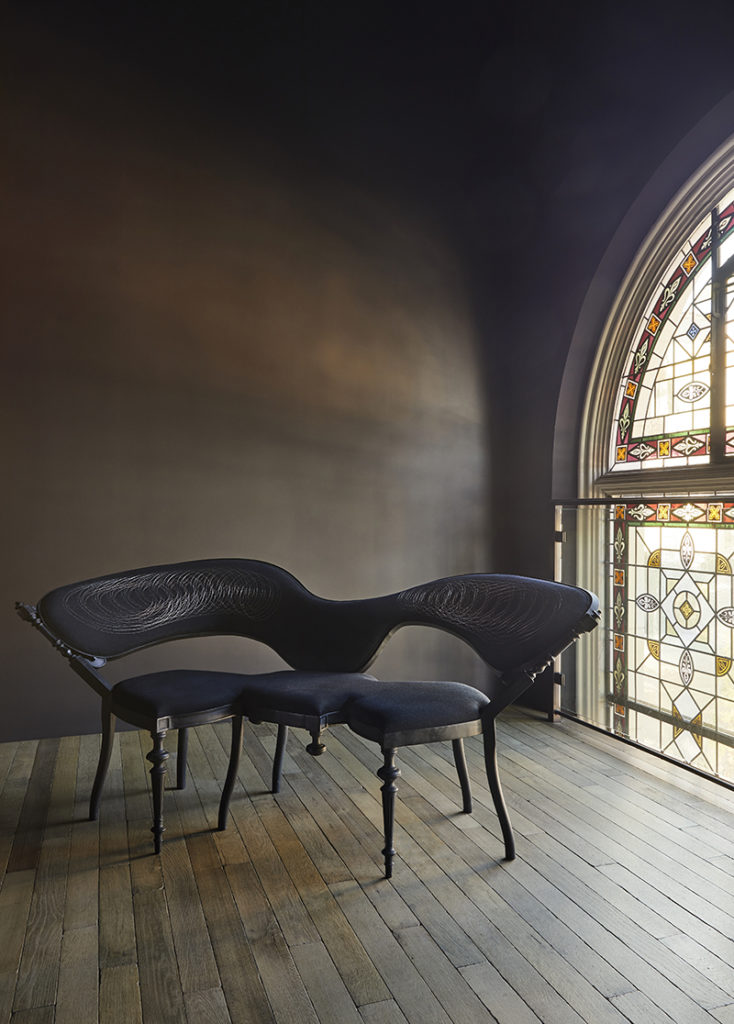
Conversation Piece by Sebastian Brajkovic, as seen in the new Carpenters Workshop Gallery. MATT HARRINGTON PHOTO, COURTESY OF CARPENTERS WORKSHOP GALLERY.
THE FUTURE PERFECT
“IT’S A LITTLE STRANGE, IT’S A LITTLE OFF-KILTER,” says David Alhadeff, founder of The Future Perfect, of the company’s recently expanded San Francisco location. With a gallery in New York and the by-appointment-only Casa Perfect in Los Angeles, Alhadeff wanted to try a new approach and take advantage of the rambling, residential spaces of the Pacific Heights neighborhood. In effect, he has created an opportunity to view design in a way that is unique, private, and a little bit magical. The nearly 5,500-square-foot gallery recalls the relaxed atmosphere of The Future Perfect’s first location in Williamsburg, Brooklyn, but infused with quirky San Francisco charm.
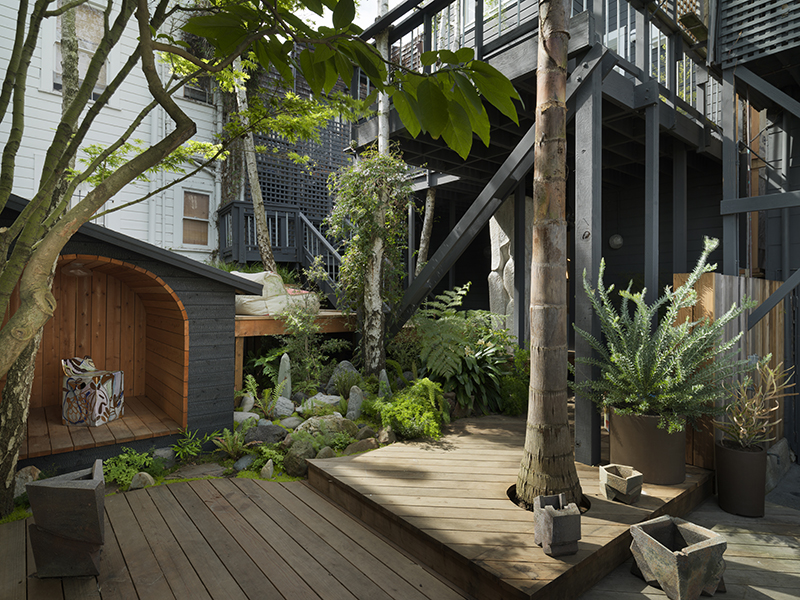
The garden area of The Future Perfect’s complex. BRIAN FERRY PHOTO, COURTESY OF THE FUTURE PERFECT.
The gallery occupies a Victorian town house and an adjoining storefront, where work is displayed on two floors, as well as in the garden. The layout encourages visitors to meander. The gallery is broken up into smaller rooms that add to the visitor’s sense of discovery, yet maintains a sense of visual consistency with coal-colored flooring and trim, including details made with fire-blackened wood—a Japanese technique called shou sugi ban. Alhadeff believes that you can’t see design objects correctly when they’re set on pedestals as in a museum. “There is something very easily understandable about the context of the space when the furniture is used within it,” he says. “So, it creates an opportunity for clients to engage with the work in a much more intimate way.”
One new section of the San Francisco gallery is used to showcase the work of one studio, and redesigned every three to four months. So far, those featured have included London-based Pinch Design and the Dutch designer Piet Hein Eek. Alhadeff has also taken an active role in the neighborhood, hosting conversations with artists and designers in the gallery, something he hopes to continue in the future. “In each setting, we attempt to blow people away,” he says. In Pacific Heights, The Future Perfect has certainly succeeded.


